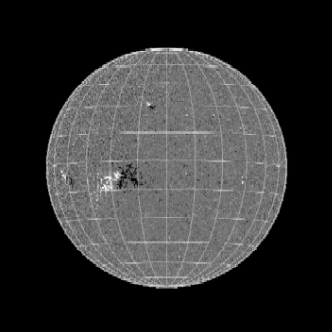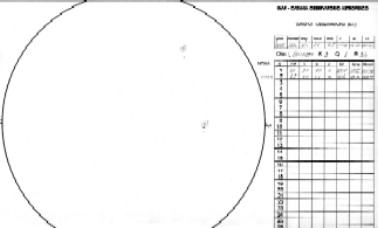On Jan 4, 5 observatoria of the SIDC world wide network noticed a high-latitude sunspot with a magnetic configuration associated with the next solar cycle.
This sunspot belongs clearly to solar cycle 24. An official definition of the start of a solar cycle does not exist. But, let's give it a try. The solar activity cycle can be quantified by the (daily, monthly, yearly) sunspot number. A next solar cycle manifests itself by the appearance of associated sunspots: high-latitude sunspots with a reversed magnetic configuration in comparison with sunspots of the previous cycle. The conditions about polarity is added only since magnetic field measurements were done. It is clear that cycles overlap: sunspots belonging to one cycle and sunspots belonging to a next cycle can simultaneous be present. In fact, the next cycle officially starts when a sunspot minimum is reached, this is at the crossing in time of the sunspot number curves of both cycles. The point is that we can only afterwards determine the starting time.
In December 2007, a high latitude area with the correct magnetic configuration but no sunspot was spotted (see the previous news item). Now, a sunspot with the correct magnetic configuration was seen.
The appearance of one sunspot isolated in time, even if it has the correct magnetic configuration, can be a false start if this sunspot is not followed by a sequence of sunspots with the correct magnetic configuration. But both the December and January event give a good indication that solar cycle 24 is about to arrive in its full glory.
Click on the MDI magnetogram to see a movie of the birth and live of the next cycle sunspot in the northern hemisphere. Note that the leading and trailing polarity of this special sunspot is exactly the same as the areas of highly concentrated magnetic fields in the southern hemisphere. A picture in the continuum made by SOHO is also available. This drawing is made by an observer of the Catania station on Jan 04, 2008. The next cycle sunspot is indicated with number 66 (NOAA 0981). Click on the picture for the full resolution.







